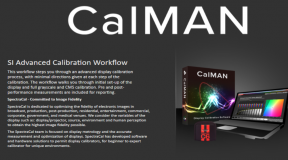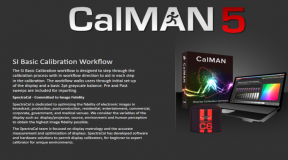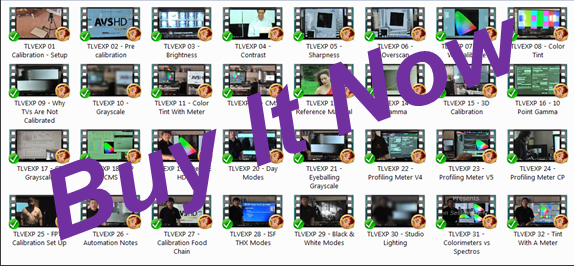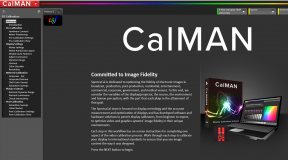Imaging Science Foundation Video Level II ( ISF Level II )
(This article was first written in October-November 2011 after I had been offered the job (and accepted) of replacing Joel Silver as the new instructor of the ISF program…funny how things turned out though.) As negative as this section may read, stay tuned as there is (?) a silver lining to all this. This revised and revamped program started at the beginning of 2010 with the expansion of the program from its previous two day structure into a three day structure. It started off with a Level I class of one day followed by the Level II class after that. It is not pure coincidence that this change came to the ISF. Driven by what THX had done with their program, the ISF expanded theirs as well, two years after THX entered the field. Imitation is the most sincere form of flattery. The new program even used in its advertising a near copy of the course outline that the THX class had been using for two years by this time. Did this make the THX side mad? Of course it did, but life continues. There is no longer an ISF Level I class. The entire program is now just a three day ISF Level II class. (The Level 1 class still exists in some form)
The expansion of the ISF Level II program to effectively three days meant that the class now also had the luxury of more hands on experience time for the students which really could only be a positive thing for calibrators in general. Up until this time, a two day ISF class really offered the students no more than 90 minutes of hands on experience and it was actually joked that some might have been unlucky in such a class and only held the remote control in their hand for five minutes especially if there were 30 or more people in the class huddled around five displays. With the new expanded format, there would be more hands-on time for all, although it could be argued that spending 90 minutes to two hours in class time troubleshooting people’s laptops to make sure the software worked was not an efficient use of class time for all the attendees. (This is only done in the after hours of the domestic THX class so as to not waste valuable class time.)
The approach of the Datacolor ISF class (circa 2005) is and was the original template that the THX video program was based upon. The current ISF class provides a sound understanding of the calibration fundamentals, but it differs from that point on. The approach of the ISF class is to properly interview clients to figure out what they really want in a home theatre and then to go build them what they want. This approach works wonderfully if these are the only types of clients that a calibration provider services. The class provides no additional information on any other type of calibration client. (Everyone is very affluent in this world.)
As a professional calibrator for the last 12+ years, I have not had any clients like the ones discussed in the class and neither do any of the independent freelance calibrators that I have met in all these years. The only people that fit this type of calibration model are the installation companies that do everything for the client and where calibration is just a very small part of the entire process; one line item of $800 in a job that exceeds $100K. The conclusion that a reasonable person would draw from this class is that class material is therefore not meant for an independent calibrator from a business perspective. Only one business model is only ever discussed. The only elements within the class that would benefit someone not fitting into this business model are just the fundamentals of calibration and nothing more.
Over the years, well over 6000+ people have gone through the ISF training program and all of them have had a sales team contact them attempting to sell them $10,000 or more in calibration equipment. Since only the attendees that are part of large installation companies could normally afford such gear, then most attendees must fall into this category. I and all the other calibrators I have known must be these odd exceptions. If one were to examine those 6000+ attendees over the years, it is a good bet that only a small number of those actually were part of installation companies. Mind you, if you dig further into the total number of attendees, one would find that just a fraction of those that have been through the program continue to practice and offer calibration services to this day. A guess is that up to 90% of those 6000+ people are no longer in the industry or offer calibration services.
In my days as an engineering student in the mid 1980’s, there was an engineering class common to all the first year students and the professors in that class would routinely tell the students to look to the left and then the right of them. Those students would not make it to graduation. Two out of three would not finish the program. In an ISF class of 10 students, 9 of the students will not be around after 1 to 2 years. They don’t tell the students that part of the equation though.
The attrition rate over on the THX side is about 50%. This means that half of all the people that have gone through the THX program do not end up completing or fulfilling all the requirements to become listed as a THX Video Calibrator. Of this 50% that have not fulfilled the requirements, 10% (50% – 10% = 40%) were media types from magazines who had other jobs so it is understandable that they were not interested in becoming calibrators anyway. Another 10% (40 -10 = 30) were representatives from the industry like people from Samsung, LG, JVC, THX, as well as a few private individuals building their own home theatres and simply wanting to learn and these would not be expected to be calibrators. So this leaves about 30% of the attendees that have decided against completing their THX requirements.
The ISF attrition numbers are much higher likely due to many of their attendees not fitting the installation company model. But all these others did not stumble onto the ISF program by accident. They were contacted and targeted by a sales staff very experienced at selling things just the same. And so all these people came to take the class that taught them the fundamentals of display calibration. It was sold that the general public looking for this service would contact them through the ISF web site and the jobs would roll in. They just had to sit by the telephone and wait. The demand was there already. Turned out that was not quite true. Soon enough, the supply of calibrators far outweighed the actual demand for calibration services. (For the 13 years or so that I have been doing this, I have not met a single professional calibrator that has told me that they have too many calibration clients. It’s always the other way around.)





